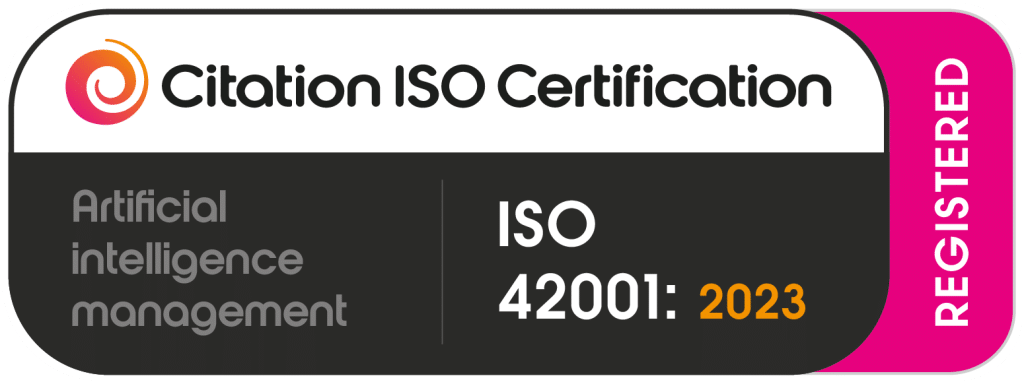How Organizations Utilize Predictive Analytics
Organizations increasingly rely on predictive analytics to gain valuable insights and make data-driven decisions.
Predictive analytics tools can help your business gain, and maintain, a strategic advantage by anticipating future trends. Predictive analytics techniques enable organizations to use their historical data, statistical algorithms, and machine learning techniques to forecast future outcomes.
Understanding Predictive Analytics
Definition and Importance of Predictive Analytics
Predictive analytics uses historical data, statistical algorithms, and machine learning techniques. Predictive analytics models make predictions about future outcomes. Businesses can make informed decisions and improve their overall performance. Predictive analysis enables businesses to use their data to gain a competitive edge. Organizations can make more informed decisions and remain one step ahead of their competitors. The predictive analytics process enables you to identify patterns and trends that might otherwise go unnoticed, and look out for potential future events. Your predictive analytics project helps you to discover hidden insights and make accurate predictions. This high level use of data analytics enhances your strategic planning and optimizes your operations. Graphite Note is an excellent tool for implementing predictive analytics into your operations. A no-code predictive analytics and prescriptive analytics tool, Graphite Note empowers businesses to explore and use their data, without technical expertise or relying on data scientists. Its intuitive interface and user-friendly features make it accessible to users of all levels, ensuring that organizations can make the most of predictive analytics without any hassle. Graphite Note gives business users the ability to use predictive analytics, artificial intelligence, and machine learning, to enhance their business strategy.
Key Components of Predictive Analytics
There are three key components of predictive analytics. These components work together to deliver accurate predictions and actionable insights. The three key components of predictive modeling techniques are:
- Data Collection and Preparation: Predictive analytics relies on data. The more data you have, the better you’re able to build machine learning models. Collect and preprocess a wide range of relevant large data sets from various sources, ensuring it is accurate, complete, and suitable for analysis. This includes different types of data. This could be internal data, external data, and any other relevant datasets. The collected data then needs to be preprocessed, ensuring it is clean, accurate, and suitable for analysis. To simplify the data collection and preparation process, organizations can rely on Graphite Note’s data integration capabilities. Graphite Note easily integrates with data from multiple sources, automates data cleaning and preprocessing tasks, and ensures the data is ready for analysis in no time.
- Model Building and Validation: Once the data is ready, you then need to build statistical models and algorithms. The models are trained on historical data and are validated using different techniques to ensure their accuracy and reliability. Once the data is prepared, you will move on to build statistical models and algorithms that can analyze the data and make accurate predictions. This involves selecting the appropriate algorithms, training the models on historical data, and validating their performance using different techniques.Graphite Note’s no-code interface makes model building and validation accessible to users of all levels of technical expertise. Graphite Note has a diverse range of machine learning algorithms and techniques, enabling organizations to build robust predictive models without writing a single line of code. You don’t need data science skills to use Graphite Note.
- Deployment and Maintenance: The final step involves deploying the predictive models into production and continuously monitoring their performance. Regular maintenance and updates play a crucial role in keeping the models up-to-date and reliable. Graphite Note simplifies the deployment and maintenance process by enabling organizations to seamlessly integrate their predictive models into their existing systems and workflows. Its user-friendly interface simplifies the monitoring and maintenance of models, ensuring smooth operations and reliable prediction.
The Role of Predictive Analytics in Organizations
There are several predictive analytics examples, where organizations can benefit from advanced analytics. Predictive analytics use cases also highlight the power of using your business analytics to predict future events.
Enhancing Decision Making
Good decision-making lies at the heart of any successful organization. Using predictive analytics, organizations can make data-driven decisions, backed by insights and foresight. Predictive models help to identify patterns and trends in data that assist in identifying potential risks, opportunities, and optimal courses of action. With these insights, organizations can make well-informed decisions that drive growth and success. Your business analytics can hold the key to knowing what to do next, and when. Graphite Note is versatile and user-friendly. Its no-code approach allows teams across departments to collaborate effectively, visualize data, and create predictive models without being hindered by technical complexities. Predictive analytics can lead to cost savings in supply chain management. Predictive analytics can be used to predict potential disruptions and delays. Using predictive analytics, businesses can address issues and prevent costly downtime. Predictive analytics can also help businesses identify potential cost savings. This could include areas like logistics and transportation. Using data to make informed decisions and take a proactive approach, businesses can negotiate better deals with suppliers. Businesses can also reduce transportation costs and improve delivery times. These savings add up and make a significant effect on the bottom line.
Risk Management and Mitigation
Risk is an inherent part of any business. Organizations can, however, use predictive analytics to identify potential risks and take proactive measures to mitigate them. Analyzing historical data and patterns, predictive models can identify early warning signs of potential risks or anomalies. This enables organizations to implement risk management strategies and minimize the impact of potential disruptions. Graphite Note comes in handy, enabling organizations to create risk prediction models that can identify potential areas of concern. By actively monitoring and analyzing data, organizations can predict and prevent risks, protecting their business interests. Predictive analytics is used to create a weather forecast. A reliable weather forecast is key for all of us, so we know how to prepare for the day ahead. In the healthcare industry, predictive analytics helps identify patients who are at a higher risk of developing certain diseases. Analyzing patient data, genetic information, healthcare data, and lifestyle factors, healthcare providers can identify patterns that indicate a higher likelihood of disease occurrence. This enables healthcare professionals and healthcare organizations to intervene early, provide preventive care, and improve patient care. Predictive analytics plays a key role in health care, chronic disease management, and customer service for healthcare organizations.
Optimizing Marketing Strategies
Marketing is a central part of any organization’s success. Predictive analytics helps organizations optimize their marketing strategies. Predictive analytics can be used to analyze customer behavior, preferences, and trends. Identifying patterns in customer data, predictive models can segment target audiences, personalize marketing campaigns, and predict the likelihood of buyer behavior. Graphite Note’s predictive analytics capabilities help you develop customer segmentation models, tailor marketing messages, and optimize marketing budgets. Through refining their marketing strategies, organizations can achieve higher customer engagement, conversion rates, and return on investment.
Challenges in Utilizing Predictive Analytics
Data Privacy and Security Concerns
Implementing predictive analytics comes with its own set of challenges. A primary concern is data privacy and security. Organizations must ensure that the data used for analysis is handled securely and in compliance with applicable regulations. You must establish robust security measures to prevent unauthorized access and protect sensitive information. Graphite Note acknowledges the importance of data privacy and security. With built-in data encryption and role-based access control, businesses can explore and analyze their data without compromising its confidentiality.
Need for Skilled Professionals
Another challenge organizations often face is the need for skilled professionals who can use predictive analytics effectively. Developing and implementing predictive analytics solutions requires expertise in data analysis, statistics, and machine learning. Graphite Note is designed to bridge this skill gap. Graphite Note offers your organization a no-code platform that empowers professionals from various backgrounds to leverage predictive analytics. Its intuitive interface and user-friendly features make it accessible to users with minimal technical expertise, ensuring that organizations can make the most of predictive analytics.
Dealing with Inaccurate Data
Accurate data is crucial for meaningful insights and reliable predictions. Organizations often encounter challenges when dealing with incomplete, inconsistent, or inaccurate data. Incorrect data can lead to flawed predictions and unreliable models. Graphite Note offers data cleaning and preprocessing capabilities that help organizations address the issue of inaccurate data. Its automated data cleaning techniques and data quality assessment tools ensure that organizations work with accurate data, leading to more accurate predictions and reliable insights.
Conclusion
Predictive analytics enables organizations to make data-driven decisions and gain a competitive advantage. Using predictive analytics, organizations can enhance decision-making, manage risks effectively, and optimize marketing strategies. Using tools like Graphite Note, organizations can unlock the full potential of predictive analytics, even without deep technical expertise. Graphite Note is your partner in this journey, offering a comprehensive, no-code predictive analytics platform designed for growth-focused teams. Graphite Note equips you with the tools to predict business outcomes with precision and turn data into decisive action plans. Don’t let complexity hold you back. Request a Demo today.





